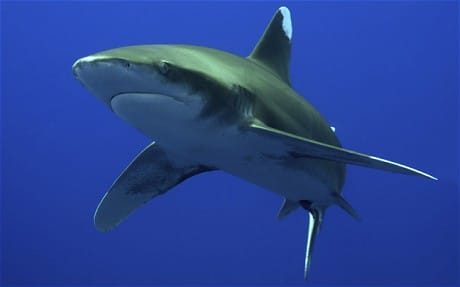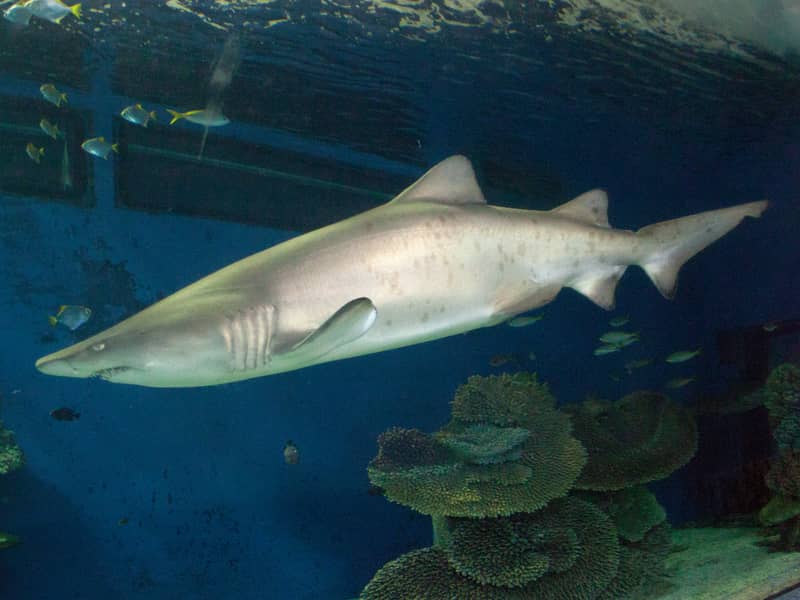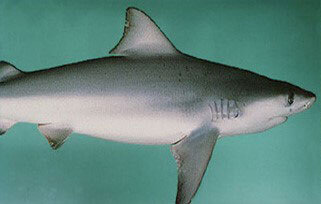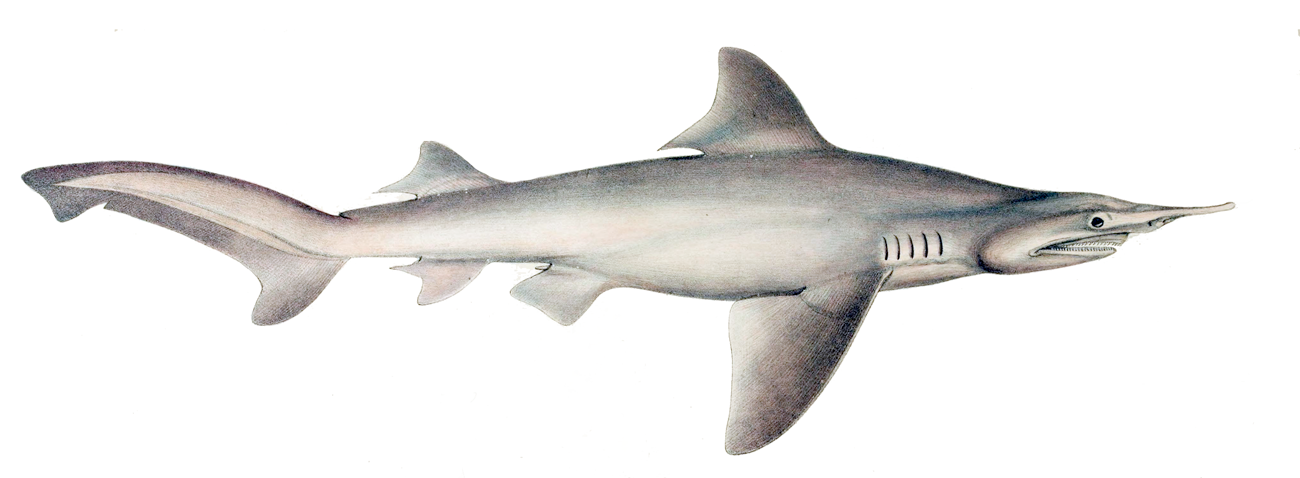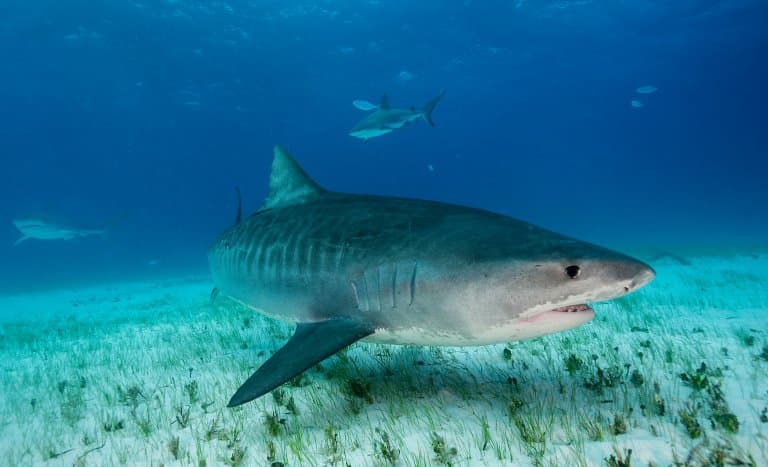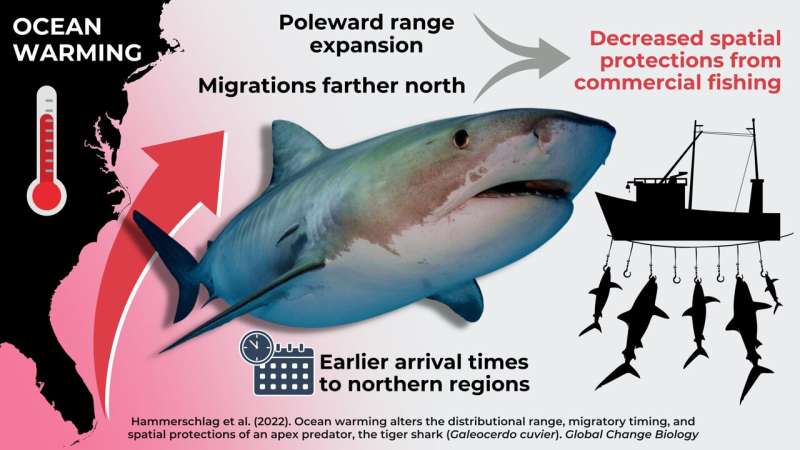Part
01
of three
Part
01
Which shark species are the most endangered and why?
Key Takeaways
- The oceanic whitetip shark's population has declined by over 70% in fifty years.
- The Pondicherry shark faces extinction. It used to be among the 25 most wanted lost species list by Global Wildlife Conservation before it was rediscovered in India.
- It is estimated that only 250 Ganges sharks are left in the world today.
Introduction
The report presents five of the most endangered shark species. They are the oceanic whitetip shark, the Pondicherry shark, the great hammerhead shark, the Ganges shark, and the daggernose shark. These species were identified based on their inclusion on the highest number of pre-compiled lists of endangered species. Most of them have a biennial gestation cycle, which is typically considered a low reproduction rate (depending on the litter size). Major threats they face include recreational and commercial overfishing, bycatch, habitat degradation, and natural predators.
The Most Endangered Shark Species
The Oceanic Whitetip Shark
- The wceanic Whitetip is a medium-sized, gray-white, critically endangered shark species. The shark has a white tip on its fins and grows to 13 feet long and about 200 lbs in weight. It has a life span of up to 25 years.
- According to Ocean Info, the oceanic whitetip shark's population has declined by over 70% in fifty years.
- It faces the threat of overfishing by commercial and recreational fisheries because it is a popular source of food (its fins are regularly used to make shark fin soup), and it's valued for its leather.
- According to AZ Animals, it achieves sexual maturity is 10 to 15.8 years.
- Females have a gestation period of 10 to 12 months. It is estimated that "their reproductive cycle is biennial, where sharks give birth on alternate years to litters ranging from 1 to 14 pups (average of 6). Larger sharks are known to produce more offspring."
- The oceanic whitetip needs open tropical and temperate seas to thrive. It inhabits offshore in the open ocean, on the outer continental shelf, or around oceanic islands in deep water areas.
- According to NOAA Fisheries, the species lives in the "upper part of the water column, from the surface to at least 200 meters (656 feet deep). The shacks have a strong preference for the surface mixed layer in warm waters above 20°C, and are therefore considered a surface-dwelling shark."
The Pondicherry Shark
- The Pondicherry shark is a critically endangered shark species. It has a pointed snout and grows to approximately three feet in length. The shark has a black tip on its pectoral fins, lower caudal fin, and second dorsal fin.
- Pondicherry sharks used to inhabit the Indo-Pacific and off the coasts of India and Pakistan. They were thought to be extinct between the 1970s and 2011. However, they were rediscovered in India.
- The species faces extinction. It used to be among the 25 most wanted lost species list by Global Wildlife Conservation before it was rediscovered.
- It is threatened by unregulated and heavy sport and commercial fishing in its habitat, as its meat is used as food.
- The Pondicherry shark is viviparous, which can be defined as "a reproductive mode where the embryo develops inside the mother's body." The birth size for females is around 13 inches long, and sexual maturity is attained at a length of over 24 inches.
- It appears that the species' breeding habits haven't been studied.
- The sharks favor the coastal waters of Indo-Pacific, but are rarely sighted today.
- According to Planet Shark divers, the Pondicherry shark typically inhabits inshore waters. Some reports also say the shark could be found in rivers, including Hooghli and Saigon rivers. In 2016, scientists confirmed that the Pondicherry shark is tolerant of low salinity.
The Great Hammerhead Sharks
- The great hammerhead sharks are the largest hammerhead shark. They grow to approximately 15 to 20 feet and 900 to 1,280 pounds. They are easily identified by their hammer-shaped snouts and have a life span of 20-30 years.
- .Unique head gives the shark three key advantages, according to science. It gives a wider field of vision (though limiting the ability to assess the distance), hosts "special sense organs, called ampullae of Lorenzini," electricity. which detect electricity and can easily locate prey, and helps the shark take quicker turns.
- Great hammerhead sharks are critically endangered, and their number has decreased by around 80% in the last 25 years across multiple regions.
- The great hammerhead sharks are threatened by killer whales, which are their only natural predators.
- They also face threats is overfishing and bycatch by humans. They are hunted for fins ("prized in the Asian seafood market"). Furthermore, they suffer the consequences of habitat degradation.
- According to AZ Animals, the great hammerhead shark's age of sexual maturity is 8-9 years.
- Females can breed once every two years, which is considered slow and said to contribute to the decline in population. It has a gestation period of 11 months and the shark's litter size is 6-42 pups.
- The great hammerhead sharks live in tropical waters around the world. They inhabit shallow waters over continental shelves and island terraces.
- Some populations can be found in Florida and the South China Sea. These sharks migrate closer to the poles in the summer months. Other populations are located in the Atlantic Ocean, Indian Ocean, Pacific Ocean and the Mediterranean Sea.
The Ganges Shark
- The Ganges shark is rare and critically endangered. They are brownish-grey in color, with stocky bodies, a broad snout, and small eyes. They measure about 2 feet long at birth and grow to between 5 and 6.5 feet long.
- The shark resembles the bull shark in size and shape. It mostly eats freshwater rays and bony fish.
- It is estimated that only 250 Ganges sharks are left in the world today.
- According to AZ Animals, the sharks are mainly threatened by human activity, such as the construction of dams, habitat pollution, increased river use, the clearing of mangroves for fuel, and hunting.
- Overfishing is another major threat to the species. As per We Love Sharks, the Ganges shark is fished for its jaws and fins. This has led to its depletion in India, prompting the Indian Government to completely ban people from hunting for it.
- According to Planet Shark Divers, research shows that it is viviparous.
- Planet Shark Divers also states that "the litter size and gestation period of the Ganges shark are unknown. However, it could be similar to other river sharks, characterized by long gestation, slow growth, delayed maturity, and small litter size." Researchers assess the reproduction rate as low, though it is not certain.
- Ganges sharks are river sharks, as they survive in freshwater. They are typically found in the middle to lower reaches of a river.
- Their typical habitat includes rivers, inshore marine, and estuaries in India and Bangladesh, particularly the Brahmaputra, the Ganges, and Hooghly rivers.
The Daggernose Shark
- Daggernose sharks are rare and critically endangered sharks. According to Shark Research, daggernose sharks have an average lifespan of up to 20 years and grow to about 1.5 m in length.
- Their long and flat snouts and pointed tip make them distinctive. They mostly eat small fish.
- Daggernose sharks are critically endangered and thought to be on the brink of extinction, due to being regularly hunted for food and caught as bycatch. Recreational fishing is also a threat.
- They mate at the end of the rainy season, and gestation lasts for one year. However, they can change their reproductive cycle times by around four months, depending on where they are. Females give birth to live young ones every other year.
- The sharks prefer muddy habitats such as estuaries, mangroves, and river mouths.
- They thrive in shallow tropical waters and are found along the northeast coast of South America, including Brazil, Guyana, and Venezuela, where they prefer depths of between 10 and 130 feet.
Research Strategy
To identify five of the most endangered shark species, we selected those that were featured on the highest number of lists published by reputable sources, including Ocean Info, AZ Animals, Sharkwater, We Love Sharks, Discovery, Planet Shark Divers, and Shark Research. We used sources older than 24 months to provide additional context about selected species, after having verified that more recent studies do not contradict the findings.
